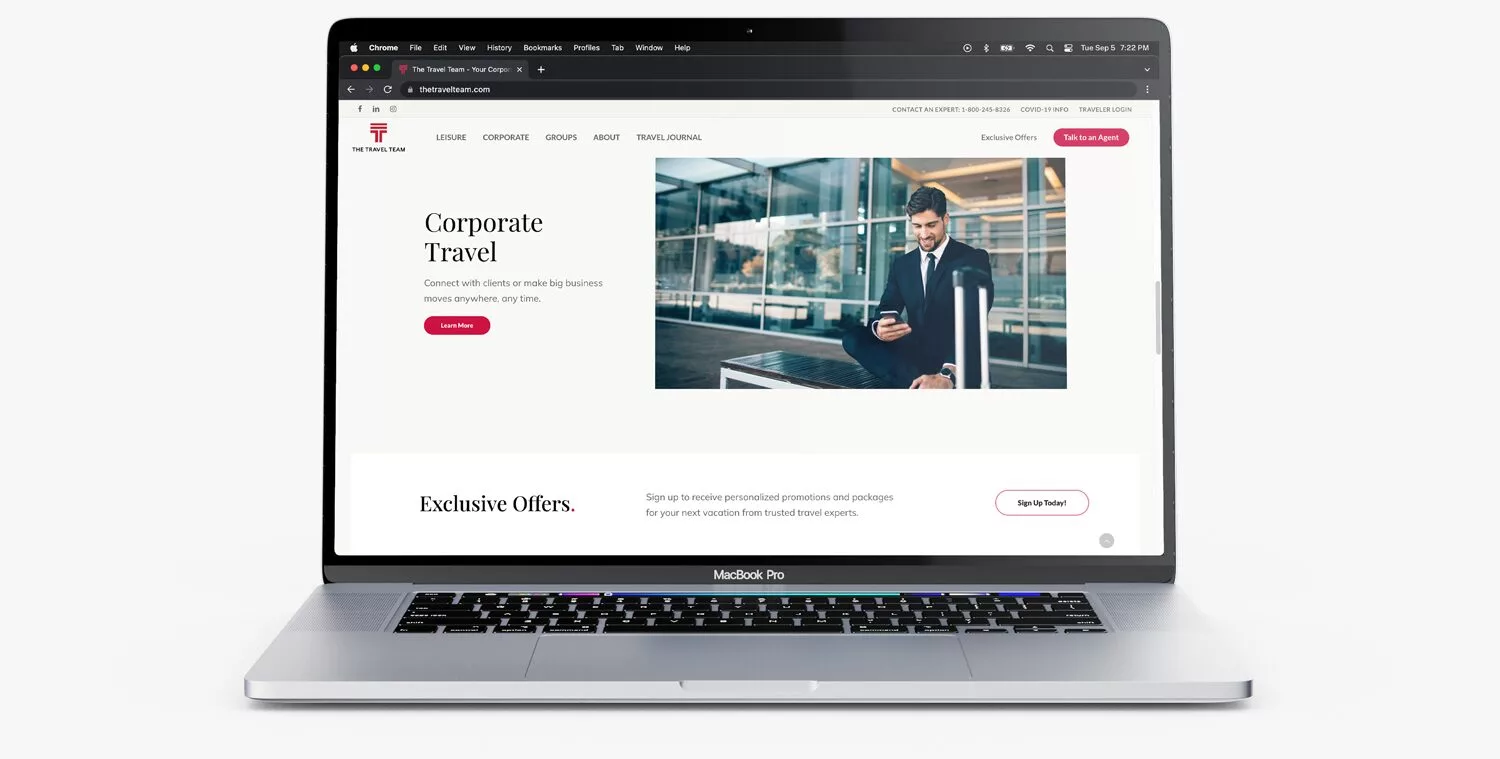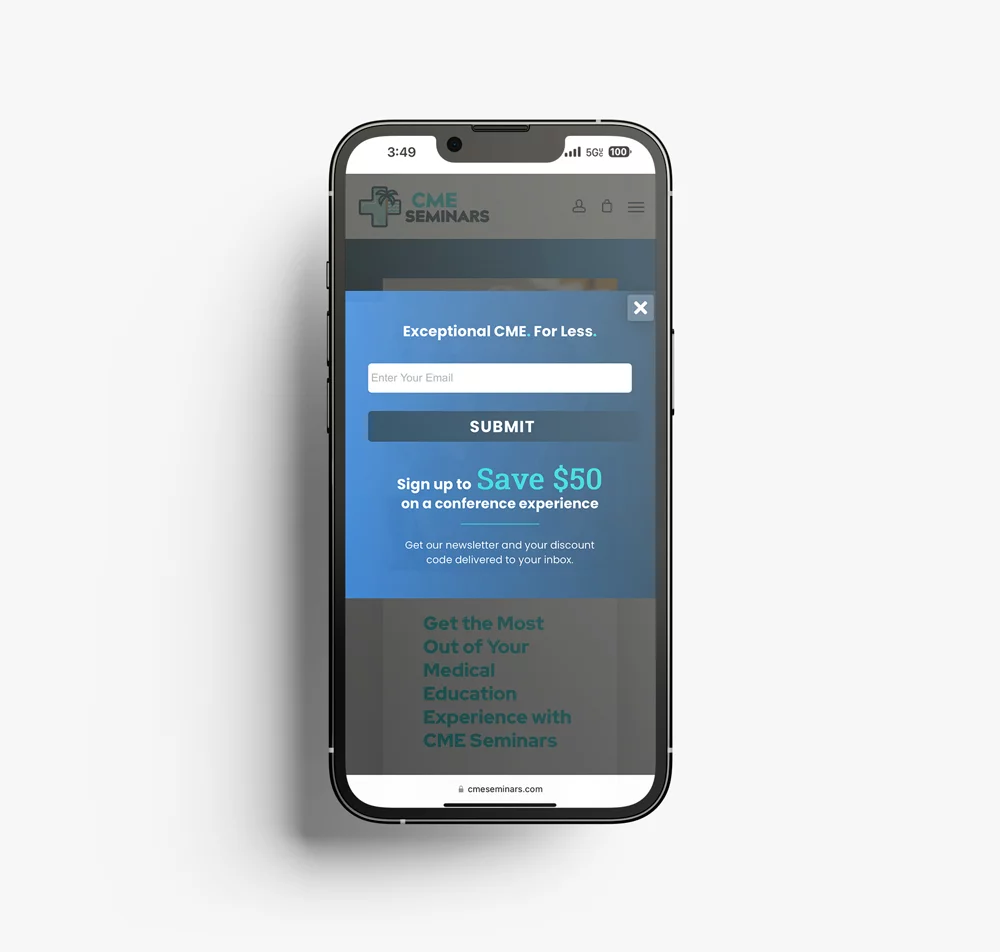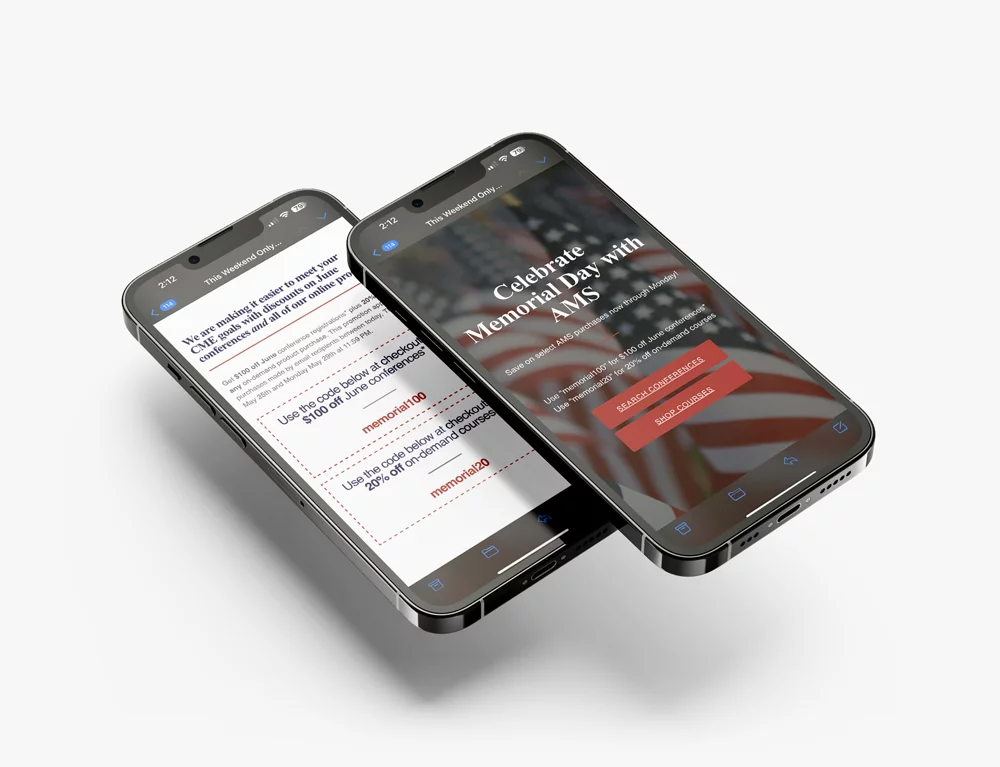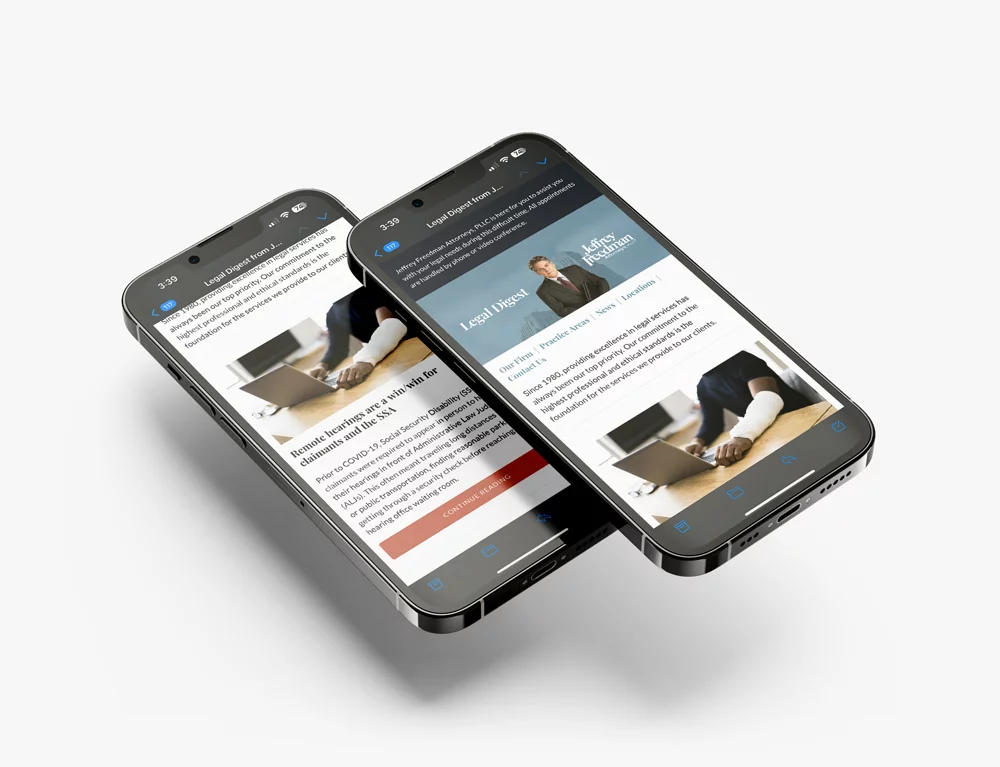Every day, 99% of consumers check their email. And despite only about 20% of emails being opened, email marketing still brings in the average business $36 for every dollar spent. That makes email marketing one of digital marketing’s greatest returns on investment. So how can you get started?
Strategic, professional and personalized email marketing campaigns that reap sizable returns aren’t just for big companies. Small businesses can also benefit from this powerful marketing tool, and there are plenty of free or low-cost platforms that make creating and sending emails relatively simple for all skill levels. By adding an email marketing campaign to your digital strategy, you can diversify client touchpoints, turn potential prospects into loyal customers and grow your brand. We’ll dive into all of that and more in this email marketing guide.
What is Email Marketing?
Email marketing is a digital strategy that involves sending targeted promotional and informational messages to a curated list of contacts. It’s a great way for small businesses to communicate directly with their target audience, share content, offer deals or pass along important business information.
4 Benefits of Email Marketing
Email marketing is an effective strategy for businesses of all types and sizes. Here are just a few of the ways email marketing can help you grow your business:
Brand Recognition
Email marketing gives you the perfect platform to convey a strong voice and visual identity representing your company’s unique advantages. Many email platforms come with templates that allow you to incorporate brand colors, logos and other visual components to show off your brand.
Share Key Information
Email marketing helps you stay relevant with subscribers by regularly updating them with valuable information they might be interested in. Sharing upcoming events, new products, sales and recent blog content helps you stay in touch with your customers and encourage them to engage with you.
Sell Products and Services
Email is a great way to boost your sales. Using a well-designed campaign, you can highlight specific products or services, promote sales or offer discounts through visual appeals and convincing copy. Seasonal and holiday campaigns are another effective option; your subscribers are likely already in the mood to buy.
Algorithms Don’t Impact Email
Unlike other content marketing strategies, email marketing isn’t affected by an algorithm. That means, unlike social media or organic search efforts, your email marketing reaches more of the people you’re targeting. Even if you have a fairly active and engaged social media audience across multiple platforms, algorithms may push other content in their direction. You also own your email contact list and don’t have to worry about losing access to your accounts, which is always a possibility when it comes to social media.
Creating an Email List
This is arguably one of the most important steps of a successful email marketing strategy. Before you create a campaign, you need people to send it to! But your email list shouldn’t be made up of just any contacts you can cobble together.
Go Through Current Contacts
Go through your inbox and import your existing email contacts to your chosen email marketing platform. As a small business owner, you probably spend a lot of time emailing employees, suppliers and customers. Copy relevant email addresses from your personal account into the tool you’ll be using to send email campaigns. Make sure you remove out-of-date emails and typos so you don’t trigger spam filters.
Encourage Sign Ups
To continue growing your contact list, encourage new people to sign up for your emails. This can be through social media accounts, your website and in person. Placing a signup form on every page of your website is a simple and easy way to collect information from your site’s visitors.

Pop-up forms are another way to invite people to sign up for an email subscription. You can even sweeten the deal for those that subscribe by offering them a discount in exchange for signing up. If you already use your website to collect leads, export that data and add them to your email list.

Collect Contacts In-Person
If you have a storefront or physical location for your business, you can also encourage people to provide their email addresses in person. Shoppers in particular are usually pretty keen to get email updates. However, if you know someone who has previously refrained from sharing their email address, don’t push it.
Comply With Email Collection Laws
The Federal Trade Commission enacted CAN-SPAM (Controlling the Assault of Non-Solicited Pornography and Marketing Act) to protect customers from abusive email practices. As the sender, you must provide your contacts with a clear way to opt out of emails if they want to and honor those requests.
GDPR (General Data Protection Regulation) is a similar law in place for recipients in the EU. Under this law, you must receive explicit, freely given consent before you can collect or use someone’s email address. After you have collected an email address, you are required to inform the contact as to why you collected their email, how you intend to use it and how long you will use it. Email addresses protected by these laws can only be used for intended purposes, and individuals have the right to refuse their email address from being collected.
Getting Started With a Platform
There are plenty of email marketing platforms available to help you get your campaign underway. At Parkway, Mailchimp is our platform of choice.
What Is Mailchimp?
Mailchimp makes it really easy to send on-brand messages and offers to many different groups of customers. It includes features like customizable templates, segmented lists, triggered automations and detailed reports that only take a little bit of setup. It also integrates with digital tools that you probably already use, like online shopping carts, Facebook Ads and Google Analytics.
Mailchimp stores contacts and email drafts right in the platform, so you don’t have to go back and forth between other tools to craft emails. You can log on from your computer or the Mailchimp app to make changes to email templates or check out your last email’s performance. It’s also an affordable option, especially for smaller businesses with a newer contact list or infrequent newsletters.
Why Do We Use Mailchimp?
We love Mailchimp so much we became part of the Mailchimp partner program to help our clients create high-quality email campaigns. As a partner, we get access to sneak peeks, tips, tools and webinars along with 24/7 Mailchimp support. But those aren’t the only reasons we recommend Mailchimp to our clients. Here are just a few of our favorite benefits:
- It’s easy for us and our clients to design, build and send emails to the right people at the right time.
- We can connect Mailchimp to other programs and integrate email marketing into a digital strategy.
- Automated lead management, including email automations, can deliver revenue growth of more than 10%.
Email Marketing Campaigns Ideas
Now that you have a platform in mind, email addresses and are growing subscribers, you’ll need to decide on an email marketing strategy. Fortunately, there are plenty of ways to use your new email list!
Welcome Emails
A welcome email automation is a series of emails triggered when someone signs up for your emails. Try to put yourself in the shoes of a potential customer interested in staying in touch with your business. A sincere “thank you” message followed by emails highlighting your most popular products, a collection of resources related to your company and links to your social media are all appropriate.
Promotions
Promotional emails are one of the most common sends because of how popular they are among recipients. These emails include coupons, discounts and other savings opportunities along with product and service information. They are a great way to get new customers to make a purchase or to entice back past buyers.

Newsletters
Keep potential customers, past clients and regulars up to date with the latest via newsletter. Upcoming virtual events, in-store sales, press coverage and blog posts can all be included. Monthly newsletters are common; as long as you stick to a regular schedule, feel free to send weekly updates or scale back to semiannual emails.
Milestones
Celebrating personalized milestones in your email strategy is a great way to develop a stronger relationship between your business and customers. You can send birthday messages, loyalty club standings or a note on the anniversary of their first purchase. While this may seem time-consuming, many of these messages can be automated.
Abandoned Cart Reminders
If you offer an online shopping experience, you probably have customers placing items in their carts and leaving your site before completing their purchase. With a quick integration, you can send emails to these website visitors reminding them to return to your site and purchase the items in their carts.
Best Practices for Small Business Email Marketing
These small business email marketing tips increase delivery rates, as well as measurable metrics like open rate (the number of people opening your email) and click-through rate (the number of people clicking on a link within your email).
Use a High-Quality Email List
An email will only deliver to an inbox if that inbox is valid. Otherwise, it “bounces.” If enough of your email addresses are invalid, it affects your reputation as a sender. As long as you’re collecting email addresses yourself and sending emails regularly (older addresses can bounce even if they were once valid), your bounce rate should stay in a healthy range.
Don’t forget: valid recipients that didn’t sign up or signed up a long time ago are more likely to unsubscribe. High bounce rates and unsubscribe rates can potentially lead to your emails being marked as spam by email service providers, meaning even those who do value your emails won’t have an easy time finding them.
Focus On Your Subject Lines
A great email can remain unseen if the subject line doesn’t catch the reader’s eye. Good subject lines should grab a reader’s attention and pique their interest. There’s a bit of creativity and strategy involved in this process. The best subject lines are short, sweet, unique and to the point.
Check out our guide to writing subject lines to find inspiration from real-world examples.
Use CTAs that Link to Dedicated Landing Pages
Calls to action like “Read More,” “Sign Up Now” and “Join Today” direct users where you want them to go. The CTA should stand out and give your readers a short, simple task to complete. Mailchimp’s button content block and options for customizing links in your text are good ways to make CTAs pop in your email.

A landing page is where your client will end up after clicking on a CTA. Your stand-out call to action should point readers to a specific landing page related to the email topic, which increases conversion rate over a more general page. When clients enter your website, they will find the exact product, blog post or event information they were expecting. This enhances user experience.
Don’t Be Annoying
Because email marketing is so direct and personalized, it can begin to feel obtrusive to some customers. If your open rates dip downward or unsubscribes go up, consider sending less frequently.
Segment Your Email List
Segmenting your email lists into different types of customers can help a story resonate with readers. Group recipients by how recently they purchased a product, how they learned about your company, demographics, geographic location or any other characteristic you’ve collected from your subscribers. In segmented campaigns, open rates are almost 15% higher and garner double the number of clicks.
For example, Parkway has segmented newsletter lists. One list is for a wide range of contacts, including past and present customers, colleagues and other local agencies, while the other is designated just for clients.
Design For Mobile Users
Responsive web design is incredibly important because more and more users are viewing sites on their phones. The same is true of emails: 54% of emails are opened on mobile devices. To ensure your emails look good across all devices, use a responsive template and preview the email on your desktop and mobile device. Think about the action you want readers to take from your email and place your call to action where viewers on all devices will see it.
Send From a Valid Email Address
You’re sending emails to your customers, so it’s only fair they should be able to send emails back to you. Use a valid email address you regularly check and respond to any questions or concerns promptly.
Tips for Great Email Marketing Content
Finding unique ways to add creative and simple elements to your email marketing strategy encourages engagement with your brand, builds your client base and can help you improve open rates. Approximately 65% of small businesses have an open rate between 11% and 50%. Of course, you’d rather have 50% of your email subscribers open your email than 11%! Here are a few tips that can help you approach that goal.
Tell a Story
Emails are a great place to tell a story. You can welcome new subscribers with a short story about the beginnings of your business or a signature product, include customer testimonials and share why you love what you do. This is just one of the ways you can build stronger bonds between your preferred customers and your business.
Be Original
Boring emails have no place in your strategy. Instead of a lengthy email without graphics, images, videos or other appeals, take the time to craft a message that is tailored to your target audience’s interests and needs. Eye-catching visuals and fun formats are another great way to stand out. Just remember that, from tone to visuals, everything in your email should reflect your brand voice.
Simplify
As we mentioned above, short and catchy subject lines are the way to go when it comes to email. But it’s not just the subject lines that should be cut back. Content within the email itself, like paragraphs, should be on the shorter side. Long, drawn-out text can discourage readers and prompt them to click off your email before they even get to the good stuff. Find a happy medium that includes straightforward text, high-quality photos, graphics or video, and a clear call to action.
Get Personal
Building a personal connection with your audience is all about making them feel important to you and your business. Getting to know your audience and personalizing content fosters benefits for you both: you earn a customer and they find a trustworthy resource that values them.
Basic knowledge of your audience’s work routine and time zone may provide insight into when your emails are most likely to be seen and opened. Utilizing merge tags to place a subscriber’s name in the subject line or email body draws attention, even in a crowded inbox. Over time, your customers may open your emails no matter what’s in your subject line because they know your email will be relevant and valuable to them!

